Do a quick Google News search for “women in technology” and your results are sure to be bemoaning the lack of female bodies in the industry. The things you’ll find may include the WSJ article Addressing the Lack of Women Leading Tech Start-Ups and an NYT piece setting the tone with: “It’s become a familiar lament: Where are the women in technology?”
Likewise, the Wikipedia entry for Women in Computing focuses almost entirely on the decline of women in tech-related fields, the modern day fights against sexism in the industry, and has sections like “Attracting women in computer science” and “Gender theory and women in computing.” (Interesting side note: there is no entry for “Men in computing.”)
Very rarely do stories of women and technology vary in tone from this gender gap theme. So, in honor of Women’s History Month and Ada Lovelace Day (March 24th), and all the women in tech, we’ve decided to pay homage by counting down the 15 most important women in tech history.
#15. The Ladies of ENIAC
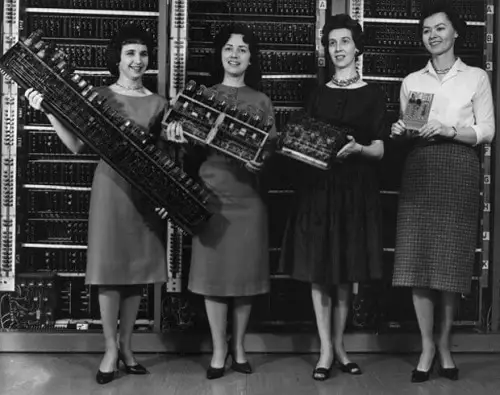
Comprised of Kay McNulty, Marlyn Wescoff, Fran Bilas, Ruth Lichterman, Adele Goldstine (and Betty Snyder), these ladies were the first “computors” working on ENIAC at the University of Pennsylvania’s Moore School of Engineering. Bearing the job title of “computor” the ladies were responsible for making calculations for tables of firing and bombing trajectories, and to determine the correct sequence of steps to complete the calculations for each problem and to set up the ENIAC accordingly. (This, by the way, meant the women maneuvered 3,000 switches and 80 tons of hardware in order to program ENIAC by hand).
The need to perform the calculations with greater speed prompted ENIACs development, hence making these flesh-and-blood “computors” obsolete. Adele Goldstine and Betty Jennings were instrumental in programming ENIACs stored program, Goldstine was also responsible for writing ENIAC’s original technical manual. Through their contributions, we gained the first software application and the first programming classes. The ladies of ENIAC were inducted into the WITI Hall of Fame in 1997.
#14. Jean E. Sammet

Another woman often (and erroneously) called the first to be awarded a Ph.D. in Computer Science (1968, Stanford), Sammet also held a B.A. in Mathematics from Mount Holyoke College (1948) and an M.A. in Mathematics from the University of Illinois at Urbana-Champaign (1949).
Sammet certainly put her mathematics knowledge to use; she was responsible for developing the first computer language while working at IBM. Sammet’s program, FORMAC, was the first widely used computer language for the symbolic manipulation of mathematical formulas. Sammet worked at IBM for 27 years, and was a member of the subcommittee that created COBOL, as well as the President of the ACM from 1974-1976. She was also an ACM Fellow (1994) and yet another lady on our list to receive the Lovelace Award (1989).
#13. Frances Allen

Allen, who earned a B.Sc. degree in mathematics in 1954 (New York State College for Teachers) and a M.Sc. in mathematics in 1957 (University of Michigan), achieved great progress in the areas of compliers, code optimization and parallelization. A Fellow of the IEEE, the ACM and the Computer History Museum, Allen did her seminal work at IBM – where she became the first IBM Fellow in 1989. Although she worked for IBM for 45 years, Allen also had a hand in intelligence work via programming languages and security codes for the NSA.
Inducted into the WITI Hall of Fame in 1997, and winning the Augusta Ada Lovelace Award in 2002, Allen was also the first woman to win the prestigious Turing Award (aka the “Nobel Prize of computing”) in 2006.
#12. Betty Holberton

Born Frances Elizabeth Snyder, Betty Holberton attended the University of Pennysylvania, where on her first day of classes, she was reportedly told by her math professor to quit wasting her time attempting a mathematics degree and to stay home and raise children. Holberton instead studied journalism, then went on to be hired by the Moore School of Eningeering to be one of the first “computors” to work on ENIAC.
Apparently her professor was wrong, as she became the Chief of the Programming Research Branch, Applied Mathematics Laboratory at the David Taylor Model Basin in 1959, helped to develop UNIVAC, wrote the first generative programming system (SORT/MERGE), and the first statistical analysis package for the 1950 U.S. Census.
Holberton worked with John Mauchly to develop the C-10 instructions for BINAC (generally considered to be the origins of modern programming languages), and also worked with Grace Hopper in the early standards of COBOL and FORTRAN. Not only did Holberton create commands, but she was also responsible for developing the numeric keypad and for making computers that awful beige color.
Holberton was the only woman, of the original six ENIAC programmers, to receive the Augusta Ada Lovelace Award in 1997.
#11. Sister Mary Kenneth Keller

Although Barbara Liskov is often named as the first woman to be awarded a Ph.D. in computer science, that honor actually goes to Sister Keller who beat Liskov to the punch by three years. After earning her Ph.D from the University of Wisconsin in 1965, Sister Keller went on to assist in the development of BASIC computer language at Dartmouth – which had previously held a “men only” rule.
Sister Keller, who also held a BS in Mathematics and an MS in Mathematics and Physics from DePaul University, felt that women should be involved in computer science (especially in the field of information specialist) and has been quoted as saying “We’re having an information explosion…and it’s certainly obvious that information is of no use unless it’s available.”
Also interested in advancements toward AI, Sister Keller founded – and directed – the computer science department at Clarke College for twenty years.
#10. Erna Schneider Hoover

Hoover, who earned a Ph.D in the philosophy and foundations of mathematics from Yale, began working as a researcher at Bell Laboratories in New Jersey in 1954. During her tenure at Bell, Hoover created a computerized telephone switching system that used a computer to monitor incoming calls. The computer would automatically adjust a call’s acceptance rate, which helped eliminate overloading problems.
The principles of Hoovers system are still in use today; for her achievement, she was awarded one of the first software patents ever issued and made the first female supervisor of a technical department at Bell.
#9. Karen Sparck Jones
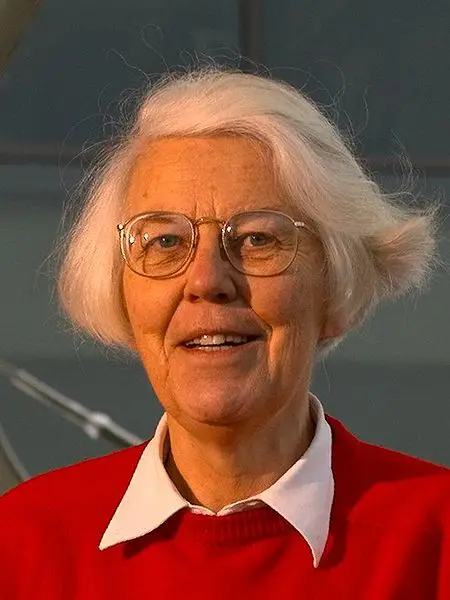
Another Brit on our list is Karen Sparck Jones, who is often considered a founder of information retrieval. Sparck Jones, who worked at Cambridge’s Computer Laboratory from 1974-2002, concentrated her work on natural language processing and information retrieval. Her most notable contribution was the concept of inverse document frequency (IDF) weighting in information retrieval – which is still used in most search engines today.
Sparck Jones retired in 2002 holding the post of Professor of Computers and Information and was also the first woman to receive the Lovelace Medal awarded by the British Computer Society.
#8. Sophie Wilson

Wilson, a British computer scientist, is most often noted for designing the Acorn Microcomputer in the late 70’s. The Acorn Microcomputer, later called Acorn System 1, was the first of many systems sold by Acorn Computers.
However, Wilson wasn’t content to stop there. In 1981, she revamped Acorn Atom’s BASIC programming language dialect into Acorn Proton. The Proton, another microcomputer, won Acorn an illustrious contract with the BBC. In 1983 Wilson contrived the instruction set for one of the very first RISC processors, the Acorn RISC Machine, which you know as ARM.
Wilson also designed Acorn Replay, a video architecture for Acorn machines, which contained OS extensions for video access as well as the codecs themselves and optimized high frame rate video.
#7. Carla Meninsky
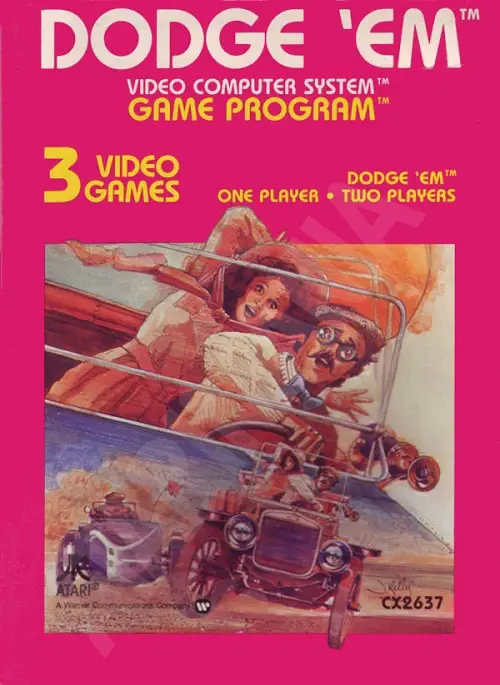
When Carla Meninsky was hired as a game designer for the Atarti 2600 console in the early 1980s, she was one of only two female engineers working at Atari. The other? Carol Shaw (below).
While working at Atari, Meninsky was responsible for the development of Indy 500 (1977), Star Raiders (1979), and Dodge ‘Em, an award winging racing game released in 1980. Call of Duty, it was not, but this driving game (which involved controlling a race car on a four lane track and collecting dots in order to advance through the levels) is a considered a classic from the golden era of gaming’s beginning.
Meninsky, who also worked on the multiplayer Warlords, is now an intellectual property attorney.
#6. Roberta Williams
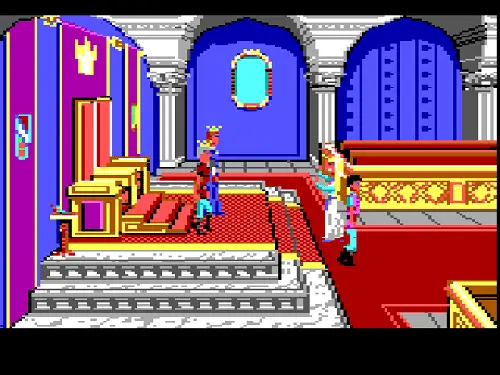
Most famous for her work on the King’s Quest videogame series, a series widely considered to be a classic from a golden era of adventure games, Williams along with her husband Ken, were big names in graphical adventure games in the eighties and nineties. Williams, who developed games for Sierra, also leant a heavy hand in other titles like the Colonel’s Bequest, Mixed-Up Mother Goose, and “Phantasmagoria” which she has called her favorite.
A tale of American success and entreprenurialship is there ever was one, Roberta was introduced to gaming by her husband, who showed her the Adventure game written by Don Woods. To say she liked it is probably an understatement, Roberta dove in, realizing that her beloved text adventure games could become even better with the by incorporating graphics.
Eventually designing a game of her own (based on Adventure), called Mystery House, the Williams’ went on to found On-Line Systems, which became Sierra On-Line (now owned by Activision Blizzard) and turned the Williams’ into leading figures in the graphical adventure game genre.
#5. Carol Shaw

Said to hold the title and honor of being the first female video game designers, Shaw was originally an Atari employee, then later joined Activision where she programmed her best known game, River Raid which everyone remembers as a “classic”– a scrolling shooter, RR was released in 1982 by Activitsion for the Atari 2600. Shaw also brought us 3-D Tic Tac Toe (1979) Super Breakout (1978), and Happy Trails (1984). Shaw also worked on the widely unknown Polo and the Atari Basic Reference Manual.
Part of the foundation of gaming, Shaw has games credited to her as late as 2006 and was noted for anticipating the industry’s procedural content generation (by 25 years, ahem) using algorithms to create RR’s continuous, but non-random, landscape. Done out of necessity, the machine at the time provided only 128 bytes (yes, bytes) of RAM.
#4. Radia Perlman
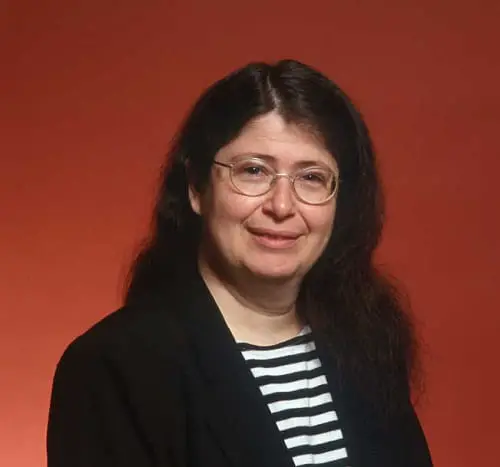
Often referred to as the Mother of the Internet, Perlman is a software designer and network engineer who is most famous for her invention of the spanning-tree protocol. Perlman, who developed spanning-tree while working for Digital Equipment Corp, holds a Bachelor’s and Master’s in Mathematics and a Ph.D in Computer Science from MIT. So, you know, girl’s got mad skills. Spanning-tree is a network protocol that ensures a loop-free topology for any bridged Ethernet local area network -which is fundamental to the operation of network bridges.
Perlman is also a heavy hitter in other areas – most notably network design and standardization such as link-state protocols – including TRILL which she invented to correct the failings of spanning-tree. Perlman has also been called a pioneer in teaching young children computer programming for developing TORTIS, a version of the educational robotics language, LOGO. Currently employed by Intel, Perlman holds more than 50 patents from Sun alone, and is the author of a textbook on networking, and a co-author of a textbook of network security.
#3. Jean Bartik
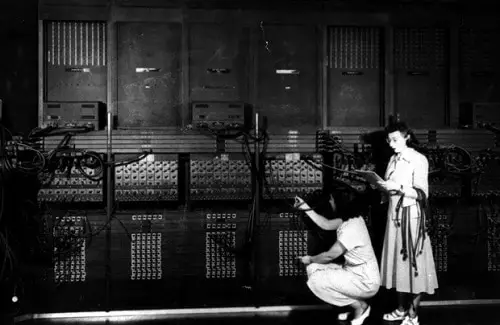
Born Betty Jean Jennings, Bartik was one of the more frequently noted women working in the infamous ENIAC group. After majoring in mathematics at the Northwest Missouri State Teachers College, she was hired by the University of Pennsylvania to work for Army Ordnance at Aberdeen Proving Ground in 1945. There she met Kay McNulty, and became one of the first programmers of ENIAC which at the time was used to calculate ballistics trajectories.
Bartik also continued working on ENIAC when it became a stored program computer. She also worked on both the BINAC and UNIVAC I computers. She went on to become an editor for Auerback Publishers, and eventually worked for Data Decisions (which was funded by Ziff-Davis Publishing) and has a museum in her name at Northwest Missouri State University.
#2. Grace Hopper

That’s ADMIRAL Hopper to you, soldier. Admiral Hopper, was not only one of the first female programmers, but also the first woman to graduate from Yale with a Ph.D in mathematics AND the first woman to reach the rank of Admiral in the U.S. Navy.
In addition to inventing the first computer complier in 1952, Admiral Hopper developed COBOL (Common Business-Oriented Language), was credited with popularizing the term “bug” and “debugging” – reportedly when she had to remove a moth from the inside of a computer, was instrumental in the creation of FLOW-MATIC language for the UNIVAC I and UNIVAC II computers and was quoted as saying “It is easier to ask forgiveness than it is to get permission.”
So basically, she’s a bigger bad-ass than you’ll ever be.
#1. Ada Lovelace
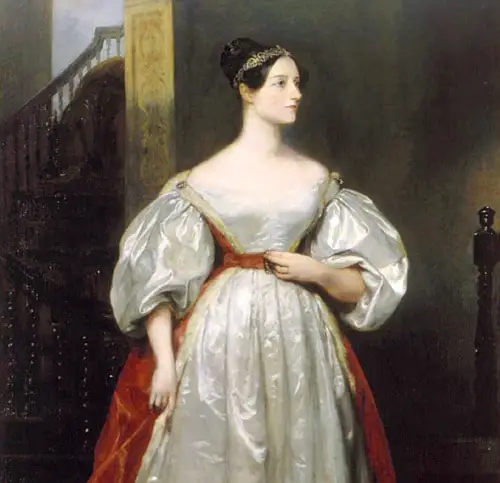
Aside from having one of the most impressive names ever, Miss Augusta Ada King, Countess of Lovelace was the only legitimate child of the poet Lord Byron and Anne Isabella Milbanke, herself a mathematician who was known as the “princess of parallelograms.”
Ada was taught math and science lest she succumb to “dangerous poetic tendencies.” Literature’s loss became technology’s gain when, in 1843 she translated Luigi Menabrea’s memoir on Charles Babbage’s analytical engine. Her notes are widely considered to be the first algorithm intended to be processed by a machine, hence making Ada the first computer programmer. The notes, which were a thorough methodology on how to use Babbages Analytical Engine to calculate a sequence of Bernoulli numbers, would have run correctly, had the Engine itself ever been built.
In addition to now having her own day, and her own award, her name was also used by the D.O.D. – “Ada” is the name the Department of Defense gave to its computer language in 1980.
But there's more. Check out these bussin stories:
- LGBTQ
 Please stop asking transracial folks these questions Offensive questions often come from people's deep attachment to the idea of race identity being linked to biological essentialism.
Please stop asking transracial folks these questions Offensive questions often come from people's deep attachment to the idea of race identity being linked to biological essentialism. - History LGBTQ
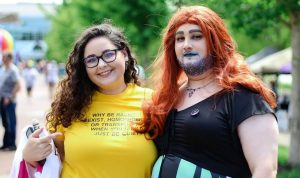 The 4 TV shows that helped a generation understand that being gay is okay And 1 that should have—but didn’t.
The 4 TV shows that helped a generation understand that being gay is okay And 1 that should have—but didn’t. - History
 5 ’90s movies that need to be rebooted with female BIPOC casts Kick-ass '90s movies that would be even better if remade with a diverse all-female all-BIPOC cast.
5 ’90s movies that need to be rebooted with female BIPOC casts Kick-ass '90s movies that would be even better if remade with a diverse all-female all-BIPOC cast.


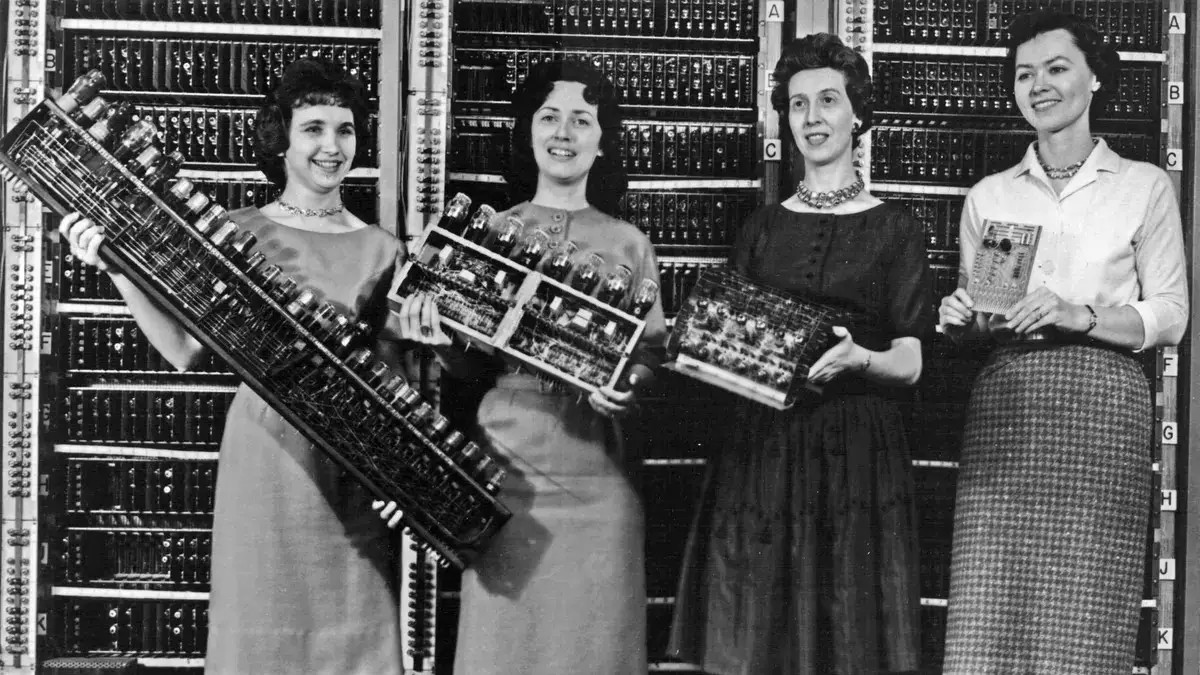
All Caucasian, of course!!! 🙂
They are brilliant women